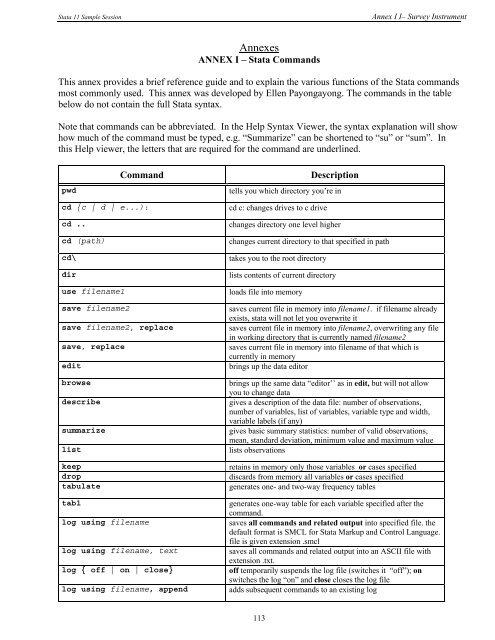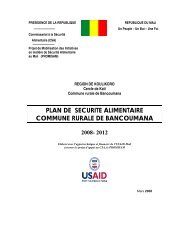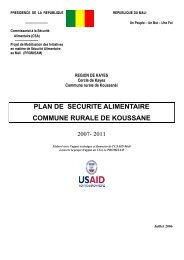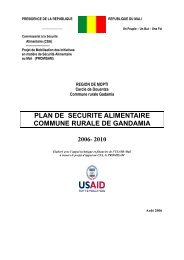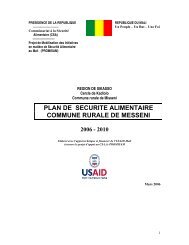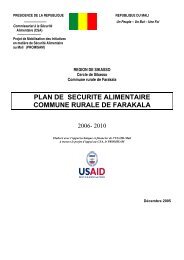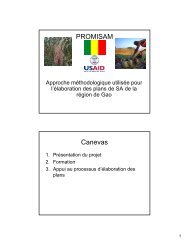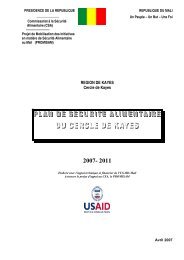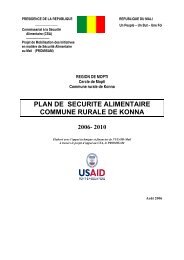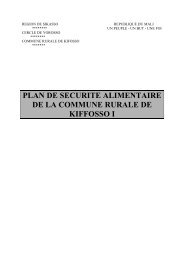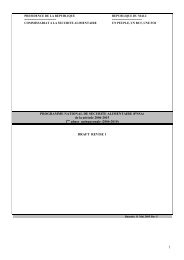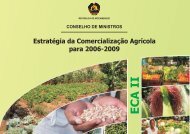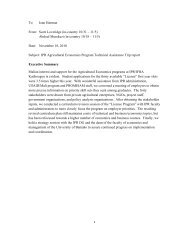STATA 11 for Windows SAMPLE SESSION - Food Security Group ...
STATA 11 for Windows SAMPLE SESSION - Food Security Group ...
STATA 11 for Windows SAMPLE SESSION - Food Security Group ...
You also want an ePaper? Increase the reach of your titles
YUMPU automatically turns print PDFs into web optimized ePapers that Google loves.
Stata <strong>11</strong> Sample Session Annex I I– Survey Instrument<br />
Annexes<br />
ANNEX I – Stata Commands<br />
This annex provides a brief reference guide and to explain the various functions of the Stata commands<br />
most commonly used. This annex was developed by Ellen Payongayong. The commands in the table<br />
below do not contain the full Stata syntax.<br />
Note that commands can be abbreviated. In the Help Syntax Viewer, the syntax explanation will show<br />
how much of the command must be typed, e.g. “Summarize” can be shortened to “su” or “sum”. In<br />
this Help viewer, the letters that are required <strong>for</strong> the command are underlined.<br />
Command Description<br />
pwd tells you which directory you’re in<br />
cd {c | d | e...): cd c: changes drives to c drive<br />
cd .. changes directory one level higher<br />
cd (path) changes current directory to that specified in path<br />
cd\ takes you to the root directory<br />
dir lists contents of current directory<br />
use filename1 loads file into memory<br />
save filename2 saves current file in memory into filename1. if filename already<br />
exists, stata will not let you overwrite it<br />
save filename2, replace saves current file in memory into filename2, overwriting any file<br />
in working directory that is currently named filename2<br />
save, replace saves current file in memory into filename of that which is<br />
currently in memory<br />
edit brings up the data editor<br />
browse brings up the same data “editor’’ as in edit, but will not allow<br />
you to change data<br />
describe gives a description of the data file: number of observations,<br />
number of variables, list of variables, variable type and width,<br />
variable labels (if any)<br />
summarize gives basic summary statistics: number of valid observations,<br />
mean, standard deviation, minimum value and maximum value<br />
list lists observations<br />
keep retains in memory only those variables or cases specified<br />
drop discards from memory all variables or cases specified<br />
tabulate generates one- and two-way frequency tables<br />
tab1 generates one-way table <strong>for</strong> each variable specified after the<br />
command.<br />
log using filename saves all commands and related output into specified file. the<br />
default <strong>for</strong>mat is SMCL <strong>for</strong> Stata Markup and Control Language.<br />
file is given extension .smcl<br />
log using filename, text saves all commands and related output into an ASCII file with<br />
extension .txt.<br />
log { off | on | close} off temporarily suspends the log file (switches it “off”); on<br />
switches the log “on” and close closes the log file<br />
log using filename, append adds subsequent commands to an existing log<br />
<strong>11</strong>3


